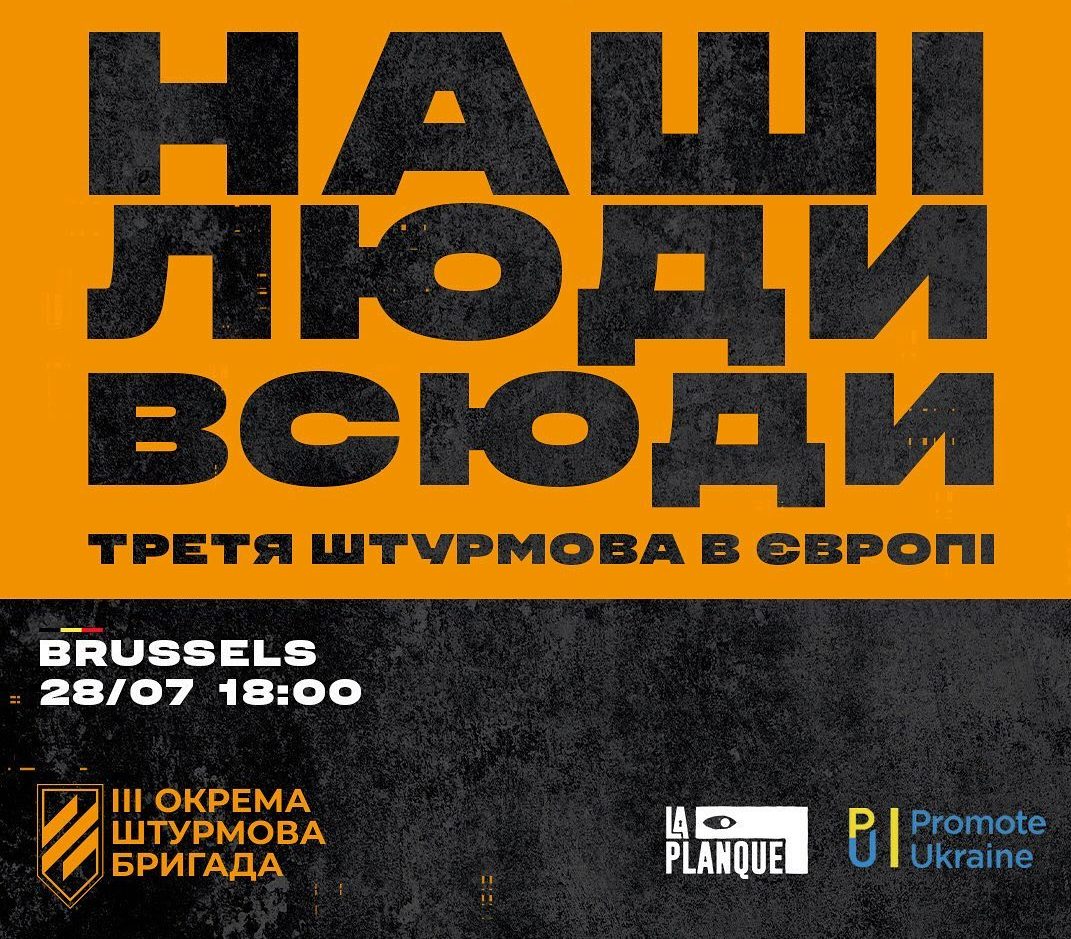The axiom “There’s nothing new under the Sun” is relevant to such an apparently modern concept as “misinformation.. An integral part of the art of war of all times and peoples, a working tool of politics from global to local levels, in the third millennium it closely affects every average Internet user.
At the same time, there is a problem of verifying the validity of information. Acute information confrontation and hybrid wars, accompanied by the spread of unreliable and harmful information in the information space, are aimed at weakening the principles of statehood, the rule of law and even humanism. This actualises the concept of “fact-checking,, “information hygiene” for ordinary citizens, and the issue of reliability of information becomes especially important.
Does the quality of information we consume matters? Do we care about its origin? Do we distinguish the truth from the fake? Are we sensitive to the manipulation and provocativeness of the news offered us by mass media?
Promote Ukraine tried to answer these and other questions by studying the attitude of the Ukrainian-speaking audience to the display of misinformation in various information resources and its impact on decision-making.
Survey Methodology: The survey was conducted on 20-26 August 2020 by means of the CAWI method and Google forms. The link to the survey was posted on the site of Promote Ukraine, Facebook, and has been mailed to the interested audience.
Development of the survey tools and information processing have been provided by the Institute of Sociological Research at Kyiv National Economic University named after Vadym Hetman.
The sociological data obtained is descriptive in nature and reflects the general attitude of the Ukrainian-speaking audience to the display of disinformation in various mass media and its influence on decision making.
Thus, the survey was performed by 635 respondents aged 18 and above. Of the respondents, 98.6 percent live in Ukraine and 1.4 percent in the EU.
The most active audience is people aged from 41 to 55 (39.69 percent) and 29-40-year-olds (26.77 percent); the least number of participants is of 65 and older (4.25 percent). Almost three- quarters of respondents (74, 65 percent) are women; 80.9 percent have higher education (Bachelor, specialist or Masters level); 24.25 percent are residents of towns with a population of up to 10,000 inhabitants; cities with more than one million population – 19.84 percent; with population from 100,000 to 500,000 dwellers – 17.01 percent, and the least number of respondents – 10.87 percent – from cities with a population of 50,000-100,000 people.
The vast majority of respondents read or listen to the news in Ukrainian (81.73 percent) and Russian (11.81 percent), as well as in English, German, French, and Italian. For a certain number of respondents, the language of the news is not essential, as they use an online translator if necessary.
Of respondents, 64.88 percent follow and 29.61 percent are more likely to follow events in the world, receiving most of the information from social networks (68.82 percent), online publications (63.15 percent) and partially – from friends and acquaintances (68.66 percent). Radio and print media are the least popular: they are the main source of information just for 4.25 percent and 5.67 percent of respondents respectively. Television is not a source of information at all for 32.44 percent of respondents, while 49.29 percent get information partly from television, and 18.27 percent receive most of the information from TV. For 64.09 percent of respondents, a partial source of information is relatives, and only 0.94 percent of respondents do not receive information from social networks.
Television was also the least convincing source of information: 39.53 percent of respondents do not trust it at all, and only 2.83 percent completely trust it. The attitude to online publications and social networks is just the opposite: they are partially trusted by the majority of respondents – 83.62 percent – and not at all trusted by the smallest number – 6.93 percent and 9.29 percent, respectively.
The rating of countries in which information sources are trusted or distrusted by our respondents was distributed as follows:
the news from the EU media are fully trusted by 21.10 percent and partially trusted by 61.73 percent.
The news from Ukrainian media are fully trusted by 13.70 percent and partially trusted by 79.37 percent, while 61.26 percent of respondents do not trust news from Russia and 31.18 percent of them do not trust news from China.
The following criteria of trust in the source of information were identified as most convincing: verification of the information source (for 93.54 percent of respondents), the credibility of the information resource (for 72.60 percent) and the country of the information origin (for 71.18 percent). The least important for trust is the popularity of the information source (by 30.08% percent.
It is important that the respondents have a clear idea of what a source of truthful information should be.
The vast majority of them believe that a source of information can be considered reliable if: (a) it is responsible for the information provided (95.75 percent); (b) it indicates the original source of the information it provides (89.29 percent); and (c) it has a proven reputation as an influential media in the national or international level (74.17 percent). The least convincing in terms of reliability is the source that uses the views of leading scientists (the relative minimum (59.69 percent) of respondents chose this criterion as important).
Of respondents, 42.36 percent check the information, even the one that seems to be true, because they believe that all information from the media should be checked. Almost the same number of respondents check what they consider doubtful (42.20 percent), while 8.35 percent do not check information that comes from credible (as they think) sources and 1.57 percent are convinced that information from the media cannot be true in principle.
Thus, almost 85 percent of respondents intend to check the information they get. However, 48.82 percent are not aware of the platforms for fact-checking information and only 4.57 percent know about such platforms and often use them. In addition, 25.35 percent know and sometimes use information platforms for fact-checking, while 21.26 percent of respondents know but do not use them.
How do respondents assess their ability to distinguish true information from fake? Of respondents, 12.13 percent rate their personal mentioned skill at 90-100 percent, while 27.09 percent are more self-critical: they believe that they can differentiate disinformation in 50-69 percent of cases. Almost half of the respondents (49.45 percent) are sure that they distinguish fakes in 70-89 percent of cases. Only 0.94 percent do not care about the accuracy of information.
Of respondents, 72.28 percent consider disinformation to be the one with no references to primary sources or these primary sources seem unreliable. For 17.01 percent of respondents, disinformation is something that seems absurd or contradicts their knowledge/ideas/experience. Only 3.62 percent consider it to be a disinformation because the media or a person they tend to trust, calls it disinformation. In addition, disinformation, according to the respondents’ opinion, is also a lie; distortion of information or its incomplete presentation, which distorts the original content; information that does not correspond the reality or that contradicts the available facts. It is the manipulation of facts; deliberate distortion of them for useful purposes, evaluative judgments of “experts” to influence the opinion of the audience, manipulation of the results of “ratings” and advertising content that is difficult to verify, as well as election promises and reports of “victories” of all political parties.
Among the sources through which disinformation can be spread and is being spread constantly, respondents name television (64.57 percent) and social networks (54.96 percent). Friends or acquaintances (67.87 percent); online publications (62.20% percent); and print media (56.22 percent) can do this sometimes. Official government pages (according to 19.53 percent of respondents) and relatives (10.71 percent) never spread disinformation.
For 64.09 percent of respondents, disinformation mainly comes from information sources of the countries with limited democracy or authoritarian regimes, but 6.14 percent believe that disinformation may originate from the democratic states as well.
For 26.61 percent, this question was difficult to answer. Among other options for answering this question, it is noted that the sources of misinformation can be anyone who benefits from it or those who are financially dependent on a particular ideological, social and political orientation; all major influential countries with influential financial groups behind the media; sources can be different, depending on what (whom) the disinformation is aimed at.
Disinformation has the greatest impact on ordinary citizens (65.35 percent of respondents), as well as on politics, culture, and business elite (30.55 percent). Aged people and people with low level of education also belong to vulnerable groups.
Only the authors of “conspiracy theories” (according to 31.34 percent of respondents) and both the authors of “conspiracy theories” and their victims (24.88 percent) are most interested in spreading disinformation as well as the government and oligarchs, authoritarian states, neo-communists and globalists, Russian Federation, Vladimir Putin, politicians and all those who work for them.
Disinformation and “conspiracy theories” are interrelated! Of respondents, 22.36 percent unequivocally think so, and 41.89 percent tend to think so, while 7.72 percent do not link these concepts.
Respondents most frequently feel disinformed while reading information of a socio-political nature (54.33 percent – very often; 35.91 percent – often), advertising (43.31 percent – very often; 39.84 percent – often); entertainment (15.43 percent – very often) and about the environment (33.70 percent). Information of a technical nature (52.13 percent and 20.63 percent) and about sports (43.79 percent), as well as scientific information (48.66 percent) creates an impression of disinformation relatively seldom and very seldom.
Of respondents, 31.02 percent feel constantly disinformed about the situation with COVID-19, and 45.35 percent feel rather disinformed. This is almost five times more than the number of opposite answers (“Rather disagree” – 17.48 percent and “Disagree” – 2.05 percent).
Of respondents, 20.63 percent have no illusions about the possibility of complete abolition of disinformation, while 59.53 percent are not so categorical but believe that it is rather impossible to overcome disinformation completely. The opposite opinion belongs to 16.53 percent of respondents (3.62 percent “Strongly agree” and 12.91 percent “Agree”).
Rebuttal of false information by the mainstream media can be an effective mechanism to combat misinformation. Of respondents, 24.09 percent absolutely agree, and 43.78 percent rather agree, respectively. A total of 27.24 percent of respondents do not agree with this position.
According to 90.55 percent of respondents, disinformation harms Ukraine’s European integration, and the launching of a voluntary platform to control political advertising will be an effective mechanism for preventing and combating misinformation (20.79 percent are absolutely convinced and 47.24 percent are optimistic about that).
Other mechanisms of preventing and combating misinformation can be bot blocking (more than 82 percent), eliminating fake accounts (more than 88 percent) and concluding a Code of Conduct against misinformation in the EU (almost 78 percent of respondents).
The “Brussels Ukraїna Review” readers and its editorial board are interested to know your opinion on the results of this survey. If you one of the respondents, are you impressed by the point of view of other participants? If you did not take part in this survey, what impression have you got looking through this summary?
Your feedback in the next issue of the Journal or on its web page https://www.promoteukraine.org/dirjournal/ is more than welcome!
Compiled by Evhenia Kolomiyets-Ludwig






 UA
UA FR
FR DE
DE




